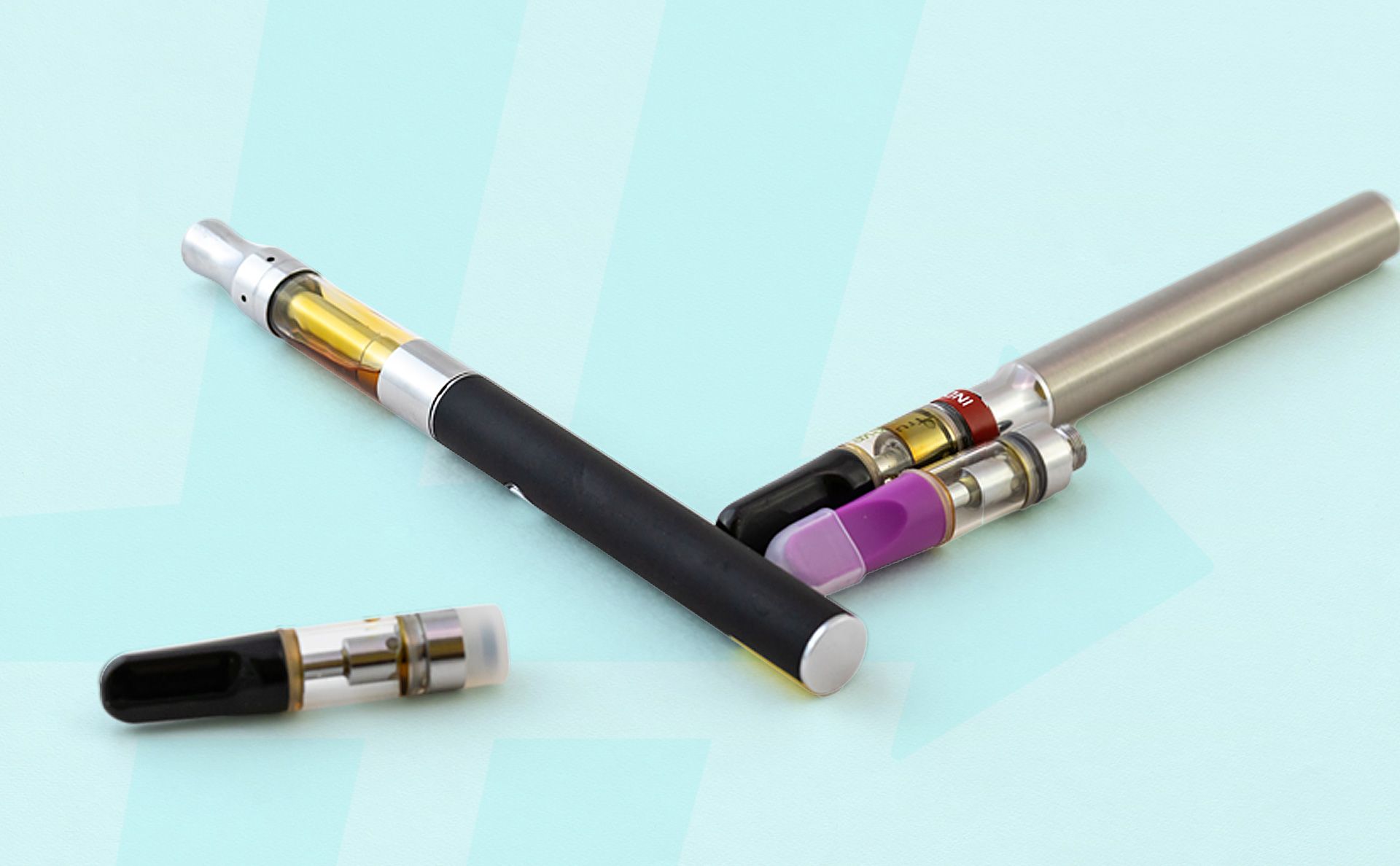Vaporizers
What is the process of vaporization and what are vaporizers? In this chapter of our Consumption Methods guide, we cover the wonderful world of cannabis vaporizers. We discuss the technology, its evolution, impact on consumer health, and more.

As cannabis consumers, we want to know as much as we can to be as health-forward, informed, and conscious as possible. Additionally, the experience and flavor are vital for determining quality and enhancing the user experience. When it comes to inhalation methods, vaporizing cannabis instead of smoking is one way to consume it in a healthier way compared to inhaling combusted herbs.
The Evolution of Vaporizer Technology
Vapes come in many shapes and sizes. One of the most popular ways to vaporize is through consuming cannabis concentrates, often called dabbing. Dabbing has come a long way, with notable advancements occurring with recent state policy forwarding legalization. Dab rigs have gone through quite the evolution, beginning with heating hash on the stove and ending with sophisticated electronic devices. Dabbing and vaporizers have evolved so much that the first forms of concentrate consumption seem quite antiquated now, and in fact, are downright dangerous. Decades before the emergence of the elaborate and amazing dab rigs we have today, a common way consumers ingested concentrates (mostly hash) was known as doing ‘hot knives’.
Hot knives are a primitive way to ingest cannabis, but it’s important to remember, if only as a way to appreciate how far we’ve come, the drastic evolution of dabbing. The hot knives method involved consumers heating a knife with hash on it, usually on the burner of a home stove. When the knives were hot enough, usually glowing red, consumers inhaled the subsequent smoke from the stove.
The next step in the evolution of vaporizers and dabbing was domeless nails. Consumers utilized a heating element made of metal and a glass dome. Although this method was simple, it was a significant upgrade over hot knives. After heating the metal, the glass dome was placed on top, then took a dab tool to the nail with their concentrates. After quartz bangers were invented, domeless nails became quaint and fairly obsolete as well.

The next step in the evolution of dabbing saw the widespread emergence of quartz bangers, which are still readily used today. Quartz bangers have a high heat tolerance as well as retention thanks to their silicon dioxide materials, providing a much safer and enjoyable concentrate experience. The risk of burning down your kitchen to take a hash dab also dissipated. Nowadays, dabbing usually involves a quartz banger and a carb cap. The carb cap acts as what old-school consumers used to call a “shotgun”, which restricts and opens airflow to control the intensity of the inhale.
Borosilicate glass is the most common material used for dab rigs now, as this glass is one of the strongest and most resistant types, necessary for the high temps needed for dabbing. Although quartz bangers made dabbing safer as they removed the need for hot knives, the danger was still involved due to the use of blowtorches.
Using a blowtorch to heat your concentrates is not only dangerous, but it also appears sketchy and off-putting to non-consumers. Fortunately, we saw the invention of eNails or electronic nails which widely replaced blowtorches in the past five years. eNails utilize electric heating coils similar to that of a soldering iron, making blowtorches less popular today.
If dabbing is human evolution, portable dab rigs are Homo erectus, the upright human, or the current stage of modern-day concentrate inhalation. At-home dab rigs are bulky, awkward, and heavy, which means not exactly portable. Portable dab rigs like the Puffco Peak or Puffco Proxy don’t need an eNail, can be taken basically anywhere, and still offer a nice representation of the cannabinoid and terpene profile of your favorite cultivar without the potential of getting dangerously hot.
Different Types of Vaporizers
There are two main types of vaporizers: convection and conduction. Think of conduction as utilizing direct heat, with convection heat is like an oven. Vaporizers that use convection heat push hot air through a chamber to heat your concentrates or dry flower.

Two popular examples of portable vaporizers that mainly use convection heating include the G-Pen Pro and the Mighty by Storz and Bickel. Two examples of popular conduction vapes include the PAX 3 and the DaVinci IQ.
In mentioning popular vaporizers, it’s important to understand that some devices use a combination of conduction and convection heating. As is the case with Indica and Sativa hybrid cannabis cultivars, how much of a cross between convection or conduction heating is up to the manufacturer to explain.
We recommend that the canna-curious purchase a portable vaporizer that uses hybrid heating (both convection and conduction) and can vape both dry flower and concentrates. If you later find you prefer the intensity of concentrate vapes over the deep flavor of dry flower ones, for example, you can always purchase a new device dedicated solely to one or the other.
When e-commerce vape stores are selling vape products, the reason they are often called "dry herb" and not "dry flower" vaporizers is to be ambiguous legally. This is a similar concept when a brick-and-mortar shop sells glass pipes "for tobacco use only." For this guide, we are discussing legal cannabis, so we will be referring to cannabis flower. When choosing a vaporization type it is important to know what you want to be vaping. If you are someone who prefers flower, make sure to look for vapes that are optimized for that. Whereas if you prefer vaping concentrates and oils, focus on vapes that specialize in those types of extracts.
As discussed above, another type of vaporizing method is dabs. Dabbing involves heating cannabis concentrates like wax and shatter on a surface, like a nail, or inhaling in what’s called a dab rig. Some consumers use blow torches to dab, which we recommend against. The safer option is what’s called an Enail, which heats the dab without the need for a large open flame.
There have been some inexperienced people trying to make their concentrates for dabbing which resulted in fires and explosions. Blowtorches and explosions are scary. For non-cannabis consumers or those who are uneducated might get the wrong impression about dabbing if seen out of context, as it can look similar to doing other more illicit drugs. However, when cannabis concentrates are made in a certified manufacturing lab with highly knowledgeable professionals, explosions and fires do not happen.
Perhaps a safer option, at least the way you ingest, is with a vape pen. Vape pens come with pre-filled cartridges that are filled with cannabis oil. Vape cartridges are disposable and pens are highly portable and can be effective for the medical patient who doesn’t want to dab or smoke but needs relatively consistent and discreet dosing.

What the expert says...
Dr. Riley Kirk
"When you smoke cannabis, you may lose some of its subtle flavors due to the combustion. Using a quality vaporizer can unlock the terpene profile of your favorite cultivars."
Are Vaporizers Healthier than Smoking?
The seemingly antiquated practice of smoking is changing rapidly, largely because many cannabis consumers are health-conscious nowadays. The negative impact on respiratory health and lung cancer from smoking tobacco is well-known.
While there is no definitive evidence that smoking cannabis causes cancer, combusting any plant can potentially come with risks to the respiratory system and expose the delicate tissues to high amounts of heat, carbon monoxide, and tar. For these reasons, many consumers are choosing to vaporize cannabis or consume edibles.
Because cannabis has been illegal in the U.S. since 1937, it has been difficult for scientific researchers to study the effects of smoking the plant. Effective and thorough research can’t exactly be done on something against the law.
Much of the studies done on cannabis consumers have been self-reported, which means people described their behaviors. It’s difficult to reflect the truth in a survey when its participants are describing something they did illegally, and often don’t trust the institutions doing the research.
Vaporizers heat cannabis flower and concentrates below the point of combustion, meaning there is less smoke inhalation, and preferably no smoke at all. However, just because you are using a vape doesn’t mean you can’t inhale some smoke. Sometimes vaporizers do heat up to the point of combustion, depending on their quality, which varies widely. As such, there is a multi-billion dollar market for vaporizers of all kinds.
While vaporizers being healthier appears to be true on the surface, some studies indicate that vaping nicotine can damage your lungs. However, little definitive evidence currently exists that vaping cannabis does damage the respiratory system. We always urge you to do your due diligence before consuming anything and if you begin to feel any adverse effects to stop inhalation methods altogether.
The act of combusting anything is harmful to your respiratory system. Even though studies show cannabis smoking is notably less harmful to the lungs than tobacco, smoking anything can be dangerous. Additionally, rolling a joint or a blunt involves an added element of paper that you are inhaling. Even if it’s hemp paper, it’s still paper. When you smoke cannabis, you may lose some of its subtle flavors due to the combustion. Using a quality vape can unlock the terpene profile of your favorite cultivars.
In a study that is likely not much of a surprise to any informed cannabis consumer, states with legal adult-use cannabis had fewer reported cases of vape-related illnesses. This study, published in the Journals of the American Medical Association Network only further solidified the fact that the black market is mostly responsible for the vape crisis. Cases of vape-related lung injuries were among the lowest in these legal states.
Vaping can sometimes feel more intense than smoking, and this is supported by research that noted people dry herb vaping had higher levels of THC compared to smokers who combusted the same amount of flower. This does make sense, if you think of what is going into the body puff for puff. With herb vaping, you are only vaporizing the active compounds (terpenes and cannabinoids) and leaving the rest of the organic plant material behind. While smoking on the other hand combusts everything in the flower. So each puff from a vape is going to contain more active compounds, and likely will make you feel the effects much stronger.
Vaporizer Crisis of 2019
Due to untested, unlicensed illicit vape cartridges, there was an unfortunate vape crisis in 2019. Many people had their lungs damaged due to a substance called vitamin E acetate present in illegal vape oils. These bad things don’t happen when consumers and product makers behave legally and responsibly, but that often starts with access to quality medicine. Bad actors must be called out by responsible and conscious cannabis consumers. This is the way we prevent harmful materials from being illegally added to vape cartridges.
Throughout 2019, there were 54 confirmed cases of death, and an alarming 2,600+ people were sent to the hospital for vaped-related injuries. Vapes were exploding due to faulty and cheaply made products, many of which came from China, resulting in tariffs placed on products made in these areas.
As 2019 drew to a close, we found out that the cause of most of these deaths was a dirty filler substance called Vitamin E Acetate. This additive came almost exclusively from illicit vapes, where companies were trying to cheapen products by adding additional chemicals. There are other nasty additives responsible for vape-related injuries, but Vitamin E Acetate is the main one, according to the CDC.
Companies are responsible for the products they produce. If they aren’t clean, it’s our responsibility as consumers to speak out and use every platform we have to inform the cannabis community about these bad actors.
As responsible, healthy consumers, we want to know where the products come from, and exactly what’s in them, right along down the supply chain and ending up in your hands. As the cannabis industry evolves, product transparency and testing evolve right along with it. The vape crisis rightfully caused many consumers to become highly concerned about the products they were buying, which in turn caused even more updates to product testing. However, this all could have been avoided if more consumers refused to purchase dirty products in the first place and if we had legal infrastructure in all states to purchase licensed cannabis products.
As is the case with many areas of our modern lives, tech companies have been stepping up in a big way to help consumers know that what they are buying is safe. According to MJ Biz Daily, these tech-based solutions start with certificates of analysis and complete testing results that cannabis consumers can access directly on their smartphones. Your smartphone can also determine proper dosing via QR codes.
Perhaps the biggest way tech is helping avoid a vape crisis is that they started encrypting vape cartridges to remove counterfeit ones that can potentially cause injuries. As we previously mentioned, the majority of these vape-related injuries were caused by products sold by shady companies illicitly.
As a growing educational resource and platform for the cannabis community, HashDash is here to help. We are committed to avoiding another vape crisis and educating the consumer about cannabis vaping. Knowledge is power, and we use data-driven information to deliver the knowledge in our guides.
Moderation Is Key
Pointing out the benefits of vaping cannabis is not to say that smoking flower isn’t enjoyable and beneficial for millions of cannabis consumers. There is just something about the old-school classic feel of rolling a joint and passing it around. But just like everything that is potentially harmful in excess, moderation is the key. However, if you’re a techie like we are, you’ll love the process of shopping for a new portable cannabis vaporizer.
What We Learned: Vaporizers
There's much to understand about vaporizers, but this chapter will give you a kickstart. Here’s what we learned in our Vaporizers chapter:
- In addition to being a healthier consumption option, vaporizers are more discreet than smoking, often display terpene profiles better, and can save you money.
- Consuming concentrates wasn’t always safe.
- One of the first methods of consuming hash was to dangerously use ‘hot knives,’ which heated kitchen knives on a stove and used them to light the concentrate.
- Domeless nails came after hot knives and utilized a heating element made of metal and a glass dome.
- Quartz bangers have a high heat tolerance as well as retention thanks to their silicon dioxide materials, providing a much safer and enjoyable concentrate experience.
- Borosilicate glass is strong and heat resistant, which is why it’s used in many vaporizers.
- Vaporizers use either convection or conduction heating, or a hybrid of both. Conduction is direct heat while convection is indirect, almost like an oven.
- Two popular examples of portable vaporizers that mainly use convection heating include the G-Pen Pro and the Mighty by Storz and Bickel.
- Two examples of popular conduction vapes include the PAX 3 and the DaVinci IQ.
- Due to untested, unlicensed illicit vape cartridges, there was an unfortunate vape crisis in 2019.
- As the cannabis industry evolves, product transparency and testing evolve right along with it. Savvy consumers must hold questionable brands accountable to avoid another vape crisis.
You’re almost at the finish line! Ready for the last chapter in our Consumption Methods Guide? Answer the question below to keep moving.
Citations
- WebMD: Does Cannabis Cause Lung Cancer?https://www.webmd.com/lung-cancer/marijuana-lung-cancer-risk#1
- CDC: Vitamin E-Acetate Deadly Vape Additivehttps://www.npr.org/sections/health-shots/2019/12/20/790154919/cdc-confirms-a-thc-contaminant-vitamin-e-acetate-the-culprit-in-most-vaping-deat
- Harvard Health: Can Vaping Damage Your Lungs?https://www.health.harvard.edu/blog/can-vaping-damage-your-lungs-what-we-do-and-dont-know-2019090417734
- Reuters: Illegal Cannabis Lab Explosionshttps://www.reuters.com/article/us-usa-drugs-insight/exploding-danger-u-s-marijuana-oil-labs-pose-deadly-destructive-hazard-idUSKCN1T51F4
- US Trade Representative: Tariffs on Chinese Productshttps://ustr.gov/about-us/policy-offices/press-office/press-releases/2018/june/ustr-issues-tariffs-chinese-products
- CDC: Vaping Crisis Peaks in August 2019, Declineshttps://www.cdc.gov/tobacco/basic_information/e-cigarettes/severe-lung-disease.html
- UCSF Health Study: Cannabis Less Damaging to Lungs than Tobaccohttps://www.ucsf.edu/news/2012/01/98519/marijuana-shown-be-less-damaging-lungs-tobacco
- JAMA: Vape-Related Illnesses Decline in Adult-Use Cannabis Legal Stateshttps://jamanetwork.com/journals/jamanetworkopen/fullarticle/2763966
- MJBiz Daily: How Tech Co. Can Help Make Vapes Saferhttps://mjbizdaily.com/how-tech-is-helping-consumer-confidence-with-cannabis-vapes/
Test your knowledge, track your progress and earn your badge.
Before the emergence of the elaborate dab rigs we have today, a common way consumers ingested concentrates (mostly hash) was known as what?

Dr. Riley Kirk
Dr. Riley Kirk is a cannabis research scientist, educator, and advocate. She is passionate about making Cannabis science accessible to everyone through social media channels. The goal of Riley’s work is to unite people in the Cannabis industry, academia, and consumers to further the reach of Cannabis education and destigmatize plant medicine.